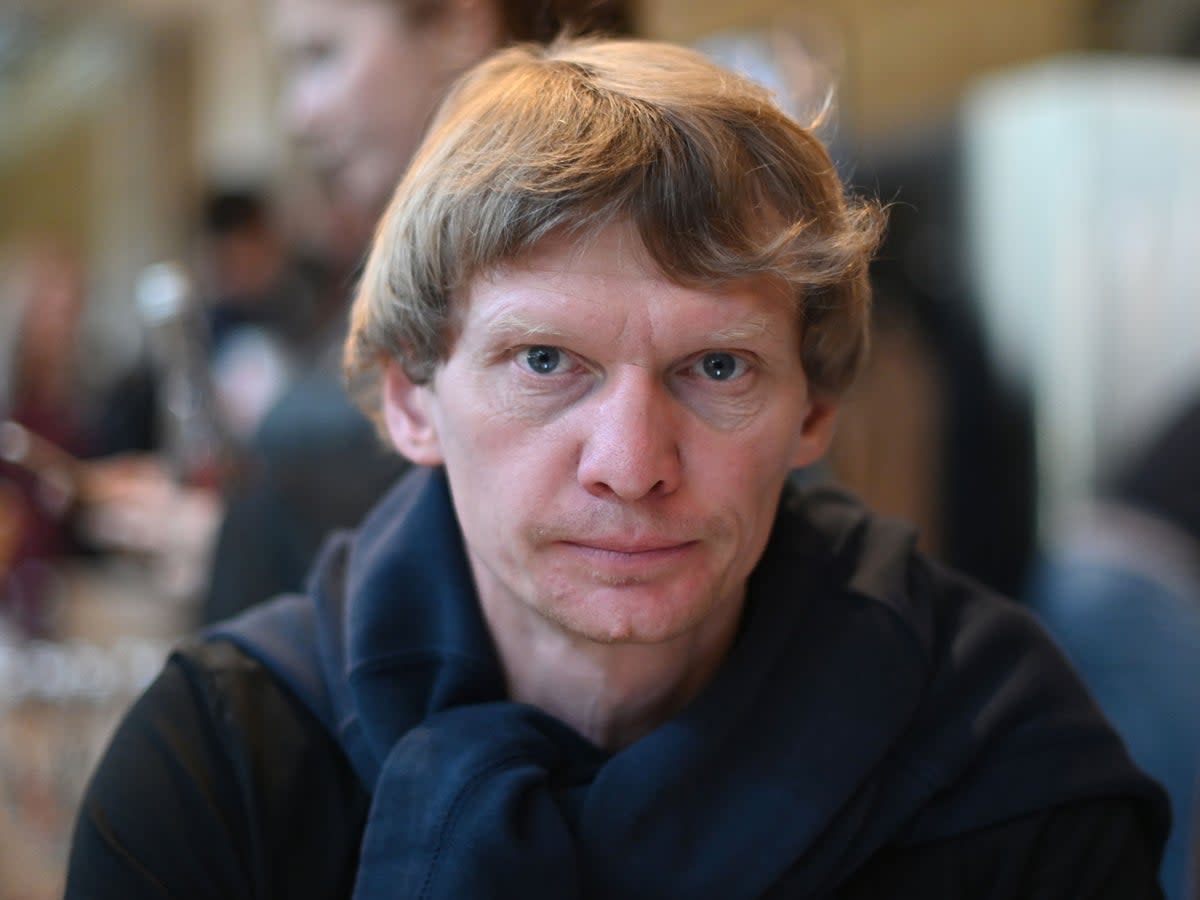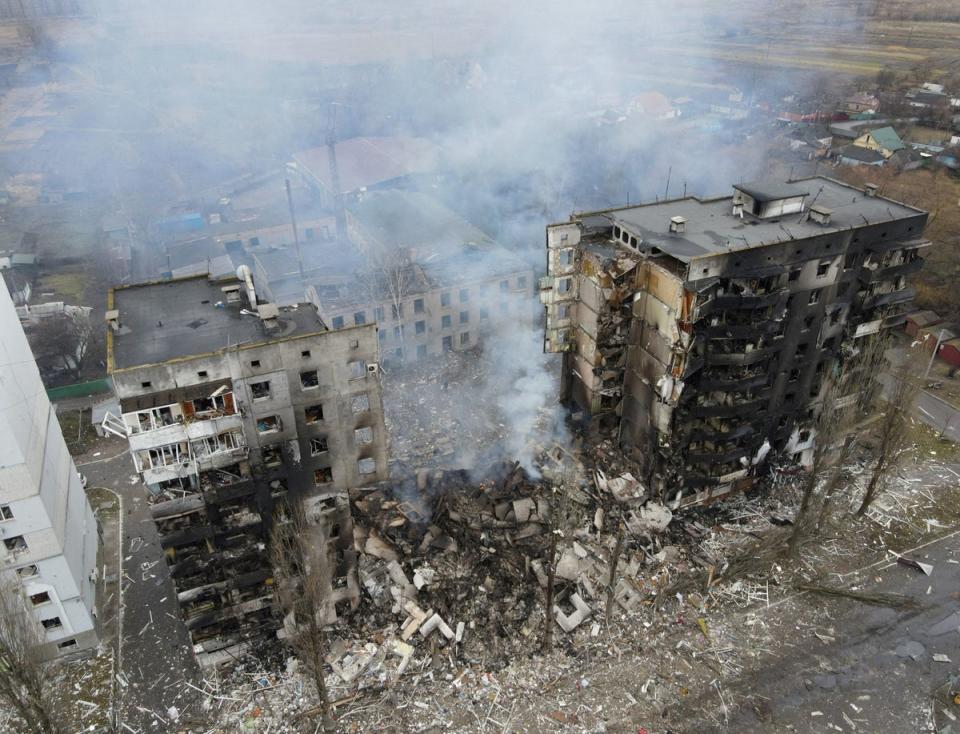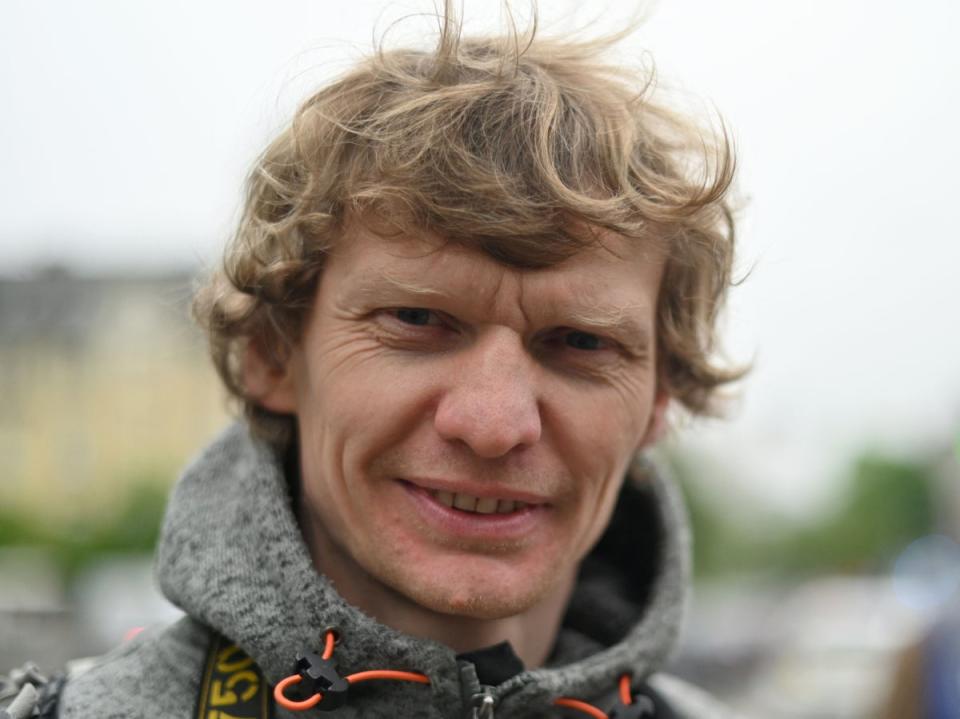Ukrainian journalist ‘executed and possibly tortured by Russian soldiers’, report says

A veteran Ukrainian journalist was “executed in cold blood” by Russian soldiers after possibly being tortured, according to a new investigation.
Reporters Without Borders (RSF) said Maks Levin, an experienced freelancer who frequently contributed to the news agency Reuters, went missing on 13 March with his friend Ukrainian soldier Oleksiy Chernyshov, around a forest north of the capital Kyiv.
Russian forces were occupying part of the area at the time.
After searching the location where the two bodies were discovered, the press freedom group said investigators found material evidence that an execution had taken place – possibly after interrogation and torture.
RSF said it was likely Mr Levin, 40, was shot at close range, while some of the evidence, including the position of Mr Chernyshov’s body, indicated that the soldier may have been burned alive.
The group said disused Russian positions, one of them still booby-trapped, were found close by. Remains of Russian food rations, cigarette packets and other items left by president Vladimir Putin’s soldiers were also discovered nearby.

If proved correct, it would be the first confirmed instance of Russian forces interrogating, torturing and executing a journalist in the war, which erupted on 24 February when Mr Putin invaded Ukraine.
Mr Levin is one of eight foreign and Ukrainian journalists who have been killed while reporting on the fighting.
“Analysis of the photos of the crime scene, the observations made on the spot and the material evidence recovered clearly point to an execution that may have been preceded by interrogation or even acts of torture,” said Christophe Deloire, RSF’s secretary-general.
“In the context of a war heavily marked by propaganda and Kremlin censorship, Maks Levin and his friend paid with their lives for their fight for reliable information.”
Patrick Chauvel, a French photojournalist who co-authored the report, called Mr Levin’s alleged execution “a crime against freedom of expression”.
“This truth will not be hidden and RSF’s investigation will be put at the service of your values, Maks. I promise you that,” he added.
The war in Ukraine has proved deadly for journalists, who according to RSF have been “directly targeted” – even while wearing armbands and vests clearly identifying them as members of the press.

The latest journalist victim was Frédéric Leclerc-Imhoff, a video reporter working for the French TV news channel BFM TV, who was killed by shrapnel from a shell fired by Russian forces on 30 May.
RSF also said Lithuanian documentary filmmaker Mantas Kvedaravicius was abducted by Russian soldiers in Mariupol and shot twice. Others have also been badly injured, coming under cluster munition fire and shelling.
Mr Levin went missing on 13 March as he travelled with his friend to Moschun, a village 20km north of Kyiv, in an attempt to recover footage from a drone he had lost three days earlier.
The two men were doubtless coldly executed
RSF report
The RSF report said a GPS tracker in their vehicle gave their last position in the woods north of Kyiv, which were occupied by Russian forces at the time.
Both bodies were found on 1 April by Ukrainian policemen.
RSF said – according to photos taken when the crime scene was initially discovered – Mr Chernyshov’s body, much of it burned, was lying face down on the ground. Mr Levin’s body was lying on its back, unburned but with three bullet impacts visible, one in the chest and two in the head.
RSF later managed to reach the crime scene, together with members of the Ukrainian security forces, where they found Mr Levin’s charred Ford Maverick which had been perforated by14 bullet holes.
Mr Chernyshov’s body was found near the open car door.
The report said investigators also recovered some of Mr Levin and Mr Chernyshov’s belongings, including the soldier’s ID papers and parts of his bulletproof vest, as well as the photographer’s helmet.
In a final search phase initiated by RSF, metal detectors located the bullet that it said had likely struck Mr Levin.
The group said that findings suggest “he was probably killed with one, perhaps two, bullets fired at close range when he was already on the ground.”
A jerrycan for petrol was also found close to where Mr Chernyshov’s burned body had been recovered, it added. The position of his body indicated he may have been burned alive.
The report concluded that their findings “show that the two men were doubtless coldly executed”.
“We owe them the truth. And we will fight to identify and find those who executed them,” said RSF’s Mr Deloire.

 Yahoo News
Yahoo News 
